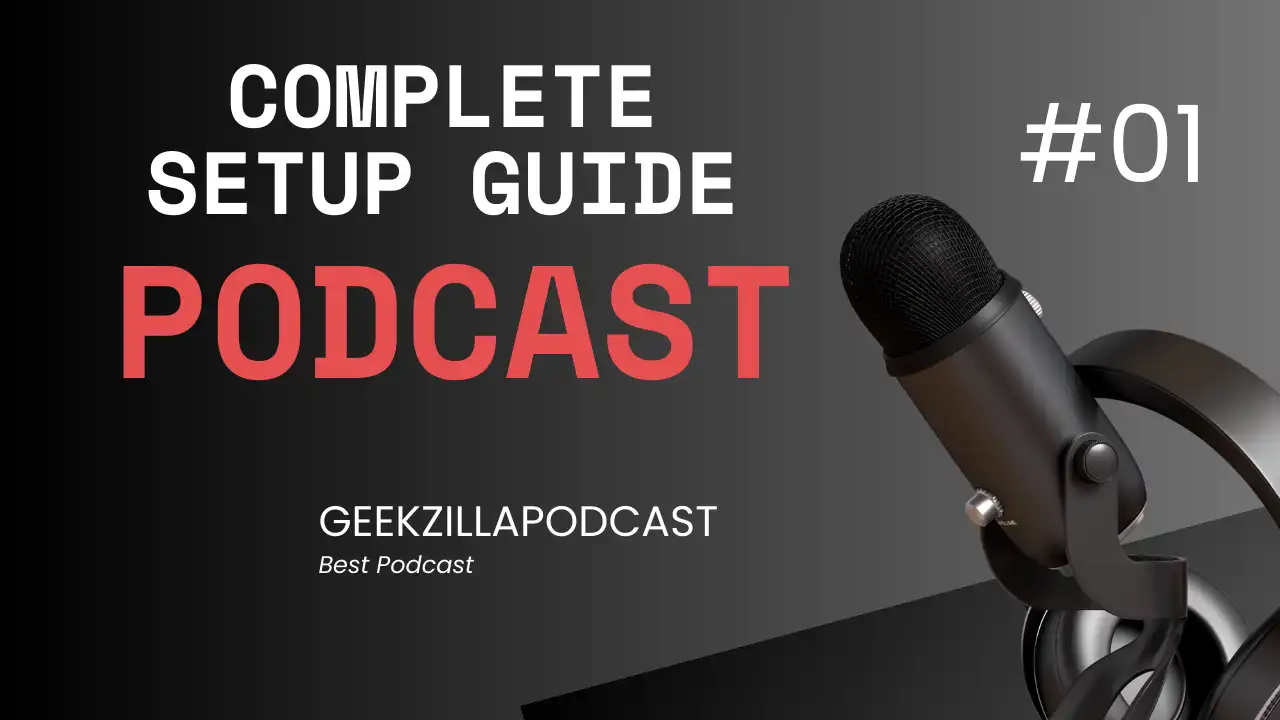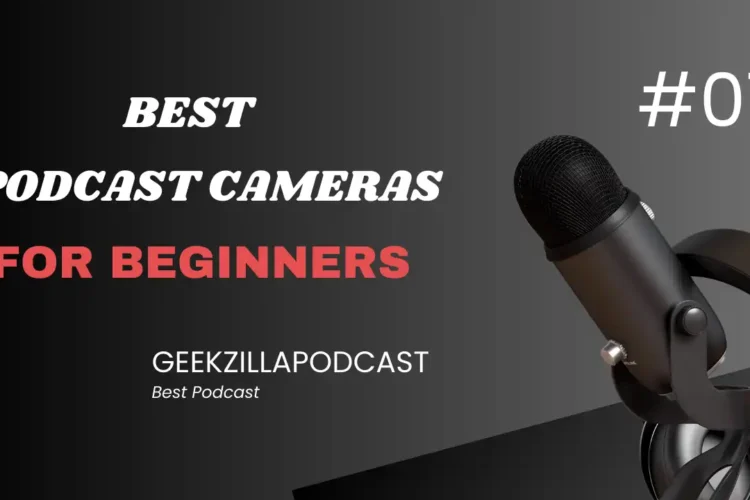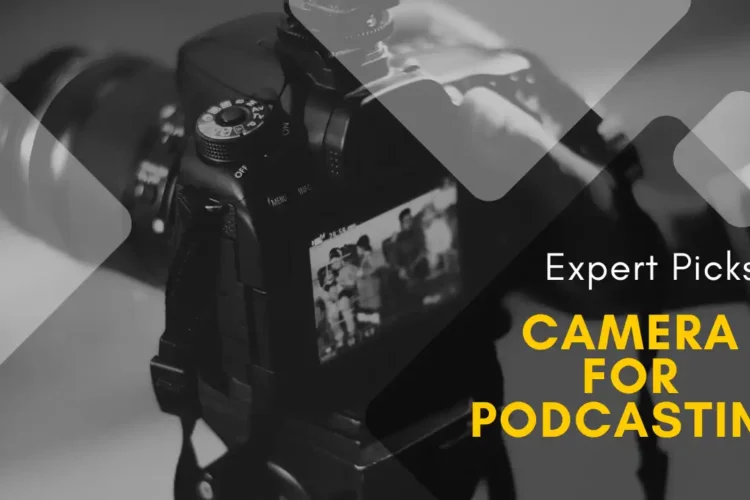
Experts say the podcast market could hit $6.6 billion by 2025. That is huge. And with video podcasts getting more attention than ever, standing out means more than just having a good story. Your gear matters big time.
Starting out and taking it up a notch, your configuration can completely transform your podcast. Maybe a USB mic is a great way for you. Or maybe you are eyeing a pro XLR mic for that studio sound. Either way, the right tools help your voice come through clearly.
Great news- there is no need for the huge investment to get the perfect look and sound for the video. Really. By organizing a little bit and having the proper instruments, you are able to set up a professional video podcast just from your bedroom, a garage, or a small rented studio.
In this video podcast setup guide we are going to describe how to do just that. We will break down what gear you need, how to set it up, and why it matters.
Let’s dive in.
Why Video Podcasts Are Increasing in 2025
Podcasts are not just about audio anymore. In 2025, video podcasts are everywhere and it makes total sense. People want more than just voices in their ears. They want to see who they are listening to.
Video adds a new layer. Viewers get facial expressions, body language, and real connection. It is easier to hold someone’s attention when they can look you in the eye even if it is through a screen.
YouTube, Spotify, and Apple Podcasts are platforms that are filled with video content. Consequently, podcasters can effortlessly access numerous individuals and host them from all across the world.
Why More Creators Are Going Visual?
So you may be thinking why are more podcasters turning on the camera? The answer is Simple:
- More views.
- More shares.
- More chances to make money.
Humans can feel more connected with you when they see you. Your face, your smile, your eye rolls all play a crucial part in telling the story. It is personal. It sticks.
In fact, studies show people remember 95% of a message in video, but only 10% with text which is a big difference. That is why going visual is not just a trend, it is a smart move.
Tips For Video Podcast setup
Here are some tips that include everything from gear to set up, software, and the small stuff you do not think about until it is too late.
1. Start With a Plan
Before you buy anything, think about your show.
Ask yourself:
- What is the podcast about?
- Who is it for?
- Will it be just you? Or interviews?
- How often will you post?
You do not need all the answers. Just a rough sketch that will help shape your gear list and setup. Also, be honest. If you are shy on camera, maybe start with audio and add video later. That is fine because our pace is your pace.
2. Budget-Friendly Video podcast Setup vs. Pro Setup
Let’s talk about money, which is the biggest concern for you, especially if you are a beginner. You can go cheap or all-in. Both work. What matters is how you use the tools.
Beginner Budget Setup (Under $300):
- Camera: Your phone (iPhone 12 or later is solid).
- Mic: Samson Q2U (USB + XLR, sounds great).
- Lighting: Two softbox lights ($50 on Amazon).
- Tripod: Basic phone tripod.
Pro-Level Setup (Over $1000):
- Camera: Sony ZV-E10 or Canon M50 Mark II.
- Mic: Shure SM7B (needs audio interface).
- Interface: Focusrite Scarlett 2i2.
- Lighting: Elgato Key Light or Neewer panel lights.
- Tripod: Fluid head tripod for smooth shots.
Start small. Upgrade later. Most people waste cash on gear they never learn to use.
3. Audio First, Always
People might forgive shaky video. But bad audio is clearly unacceptable. They will turn it off in seconds. So, here are some good audio tips:
- Do not use your laptop mic.
- Use headphones when you record to catch noise.
- Record in a quiet place. Turn off fans and AC if you can.
- Get close to the mic. About 6 inches.
A $100 mic can sound amazing if you record it right.
4. Get the Right Camera
Good videos make people stick around. But that does not mean you need a $2000 camera.
Here are three best options:
- Your Phone (iPhone 13 or newer) is an easy option and the quality also looks great.
- Webcam (Elgato Facecam, Logitech Brio) which is plug and play without any difficult setup.
- DSLR or Mirrorless (Sony ZV-E10, Canon M50 II) with better depth are more pro. Needs setup.
If you go with a DSLR, you will need a capture card (like Elgato Cam Link) to hook it to your computer.
5. Do not Ignore Lighting
Lighting makes or breaks your video. You can have a 4K camera, but if your lighting sucks, it still looks bad.
Lighting Tips:
- Soft, even lighting is your goal.
- Do not put lights behind you that will create shadows on your face.
- A key light in front, and a fill light on the side? Perfect.
If you are low on budget, daylight near a window is the best option and it is free and flattering.
6. Backgrounds Matter
If your room is messy with distracting posters or random people walking behind you , it will make you look unprofessional. Your background should not steal the show.
Here are some tips for making a good background:
- Use a curtain or blank wall.
- Add a bookshelf, plant, or soft lamp.
- Try a shallow depth of field (blurry background) if you are using a good camera.
The goal is to have a background that is Clean, calm, and focused on you.
7. Use Reliable Software for Recording and Editing
You have got the right equipment but it is also essential to have the right software for recording and editing to get the best results.
For Recording you can use any of following:
- OBS Studio (free): Great for live recording.
- Riverside.fm / Zencastr: Perfect for remote interviews.
- Ecamm Live (Mac only): Solid all-in-one.
For Editing
- DaVinci Resolve (free): Powerful video editor.
- Final Cut Pro / Adobe Premiere Pro: Paid, but pro-level.
- Descript: Edit audio/video like a doc. Super beginner-friendly.
Do not keep switching from one tool to another. Choose one tool and stay with it for some time.
8. Stay Organised
This part is not fun, but it is highly essential. You should make folders such as:
- Raw Footage
- Audio Only
- Thumbnails
- Finished Episodes
- Social Clips
Name files clearly and keep backups. You do not want to lose your best episode to a crash.
Use a Notion or Google Sheet to track:
- Guests
- Topics
- Upload dates
- Titles and descriptions
It keeps your brain from frustration and stress.
9. Posting Your Podcast
Where you post depends on how you record.
Video + Audio:
- YouTube: Must-have for visual reach.
- Spotify Video Podcasts: Gaining ground.
- Rumble, TikTok, Instagram Reels: For short clips.
Audio Only:
- Apple Podcasts
- Spotify
- Google Podcasts
- Pocket Casts
Use tools like Anchor or Buzzsprout to distribute your audio to multiple platforms with one upload.
10. Make Social Clips
Full episodes are great. But sharing clips on social media can bring more engagement.
You can use following tools
- CapCut
- VEED.io
- Descript
Add captions. Keep clips under 60 seconds. Share them on Instagram, TikTok, and YouTube Shorts. It is the fastest way to grow.
How Video Podcasts Help You Grow and Make Money?
Are you looking to increase attention to your podcast? Go for short-form videos to make it right. Short videos on TikTok, Reels, or YouTube Shorts are like a wand that does magic. Around 54% of brands already use them to pull in new listeners.
Now let’s talk about money because it matters. About 35% of companies are not just podcasting for fun. They are in it to earn.
Here is how they are getting paid:
- 71% make money from YouTube ads
- 34% bring in cash through sponsors
- 29% sell bonus or premium content
Adding video can open even more doors. Think visual ads, product placement, and brand deals. On Spotify, Premium users in certain places can even watch video episodes without ads. Creators still get paid based on how many views they pull in. Plus, for every ad Spotify places, creators get 50% of the revenue.
YouTube is a big player too. Its massive audience and easy search tools give podcasters a solid shot at more reach. You are not just uploading a video you are tapping into a whole new crowd.
Common Mistakes to Avoid
You may mess up things while recording podcasts. Everyone does. But here are a few mistakes you can avoid:
- Recording with the mic turned off (it happens).
- Talking for 45 minutes without a clear point.
- Using copyrighted music.
- Ignoring your lighting.
- Posting without titles or good thumbnails.
- Forgetting to hit “record.”
If any mistake happens, learn from them and keep going.
FAQs – Video Podcast Setup Guide
Can I start without spending a lot?
Yes Your phone with a USB mic is plenty to begin with.
Do I need a co-host?
No, But banter is fun. Try a guest every few episodes if solo feels dull.
What if I hate being on camera?
Start with audio-only. Once you are comfortable, flip on the cam.
How often should I post?
Once a week is great. But stick to a pace you can keep up.
Final Words – Video Podcast Setup Guide
Starting a video podcast in 2025? It is the right time because more people are watching than ever. But let’s be honest, it takes more than just hitting “record” and talking. If you want to get noticed, you have got to sound clear, look good, and show up like you mean it even if you are recording in your bedroom.
Focus on the basics such as clean, crisp audio, good lighting and a background that is not distracting. You do not need fancy stuff. You just need to set it up right.
Start simple. Do not try to get everything perfect on day one. It is okay to mess up. Everyone does. Just fix what needs fixing, and keep going.
Read More : Top 10 IGAnony Alternatives: Best Instagram Story Viewers to Explore in 2024


